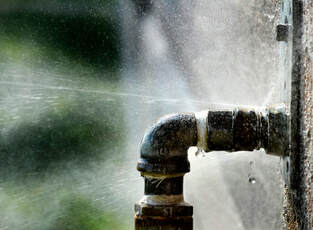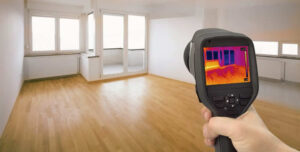Right here in the next paragraph you can discover lots of first-rate additional info on the subject of Top leak detection hacks.

Early detection of leaking water lines can reduce a potential catastrophe. Apart from saving you money, it will certainly minimize the stress and aggravation. The minute you locate a leak, calling your plumber for repairs is the best solution. Nevertheless, some tiny water leakages may not show up. Below are some hacks that assist if you can not detect it with your nude eyes.
1. Examine the Water Meter
Every home has a water meter. Checking it is a proven way that helps you find leakages. For beginners, shut off all the water resources. Make sure no one will certainly flush, use the tap, shower, run the washing equipment or dish washer. From there, go to the meter and also watch if it will alter. Given that no one is utilizing it, there ought to be no activities. If it moves, that indicates a fast-moving leak. If you identify no changes, wait an hour or 2 and check back once again. This means you may have a sluggish leak that might even be below ground.
2. Inspect Water Consumption
If you identify abrupt adjustments, regardless of your usage being the same, it implies that you have leaks in your plumbing system. An abrupt spike in your costs indicates a fast-moving leakage.
Meanwhile, a stable increase on a monthly basis, even with the same habits, reveals you have a sluggish leak that's additionally gradually rising. Call a plumber to completely inspect your residential or commercial property, especially if you feel a cozy location on your flooring with piping below.
3. Do a Food Coloring Test
When it comes to water intake, 30% comes from toilets. If the shade in some way infiltrates your bowl throughout that time without flushing, there's a leakage between the storage tank as well as dish.
4. Asses Exterior Lines
Don't forget to check your exterior water lines too. Test spigots by affixing a garden hose. Must water seep out of the link, you have a loose rubber gasket. Replace this and also make sure all connections are limited. It will help obtain it properly examined and also maintained annually if you've obtained a lawn sprinkler system. One tiny leak can waste tons of water and also surge your water bill.
5. Examine the scenario and examine
Home owners need to make it a practice to examine under the sink counters and even inside cupboards for any kind of bad odor or mold and mildew development. These two red flags suggest a leakage so prompt interest is called for. Doing routine assessments, also bi-annually, can save you from a major problem.
Inspect for discolorations and compromising as many pipes and appliances have a life expectations. If you presume leaking water lines in your plumbing system, do not wait for it to rise.
Early discovery of leaking water lines can reduce a potential calamity. Some tiny water leaks may not be visible. Examining it is a surefire way that aids you uncover leakages. One small leak can waste bunches of water and also surge your water bill.
If you suspect dripping water lines in your plumbing system, don't wait for it to escalate.
WARNING SIGNS OF WATER LEAKAGE BEHIND THE WALL
PERSISTENT MUSTY ODORS
As water slowly drips from a leaky pipe inside the wall, flooring and sheetrock stay damp and develop an odor similar to wet cardboard. It generates a musty smell that can help you find hidden leaks.
MOLD IN UNUSUAL AREAS
Mold usually grows in wet areas like kitchens, baths and laundry rooms. If you spot the stuff on walls or baseboards in other rooms of the house, it’s a good indicator of undetected water leaks.
STAINS THAT GROW
When mold thrives around a leaky pipe, it sometimes takes hold on the inside surface of the affected wall. A growing stain on otherwise clean sheetrock is often your sign of a hidden plumbing problem.
PEELING OR BUBBLING WALLPAPER / PAINT
This clue is easy to miss in rooms that don’t get much use. When you see wallpaper separating along seams or paint bubbling or flaking off the wall, blame sheetrock that stays wet because of an undetected leak.
BUCKLED CEILINGS AND STAINED FLOORS
If ceilings or floors in bathrooms, kitchens or laundry areas develop structural problems, don’t rule out constant damp inside the walls. Wet sheetrock can affect adjacent framing, flooring and ceilings.
https://www.servicemasterbyzaba.com/blog/how-to-detect-water-leakage-in-walls/

I was made aware of that editorial on Leaking water lines through an associate on our other website. Sharing is good. You never know, you may just be helping someone out. Thanks a lot for your time. Visit us again soon.